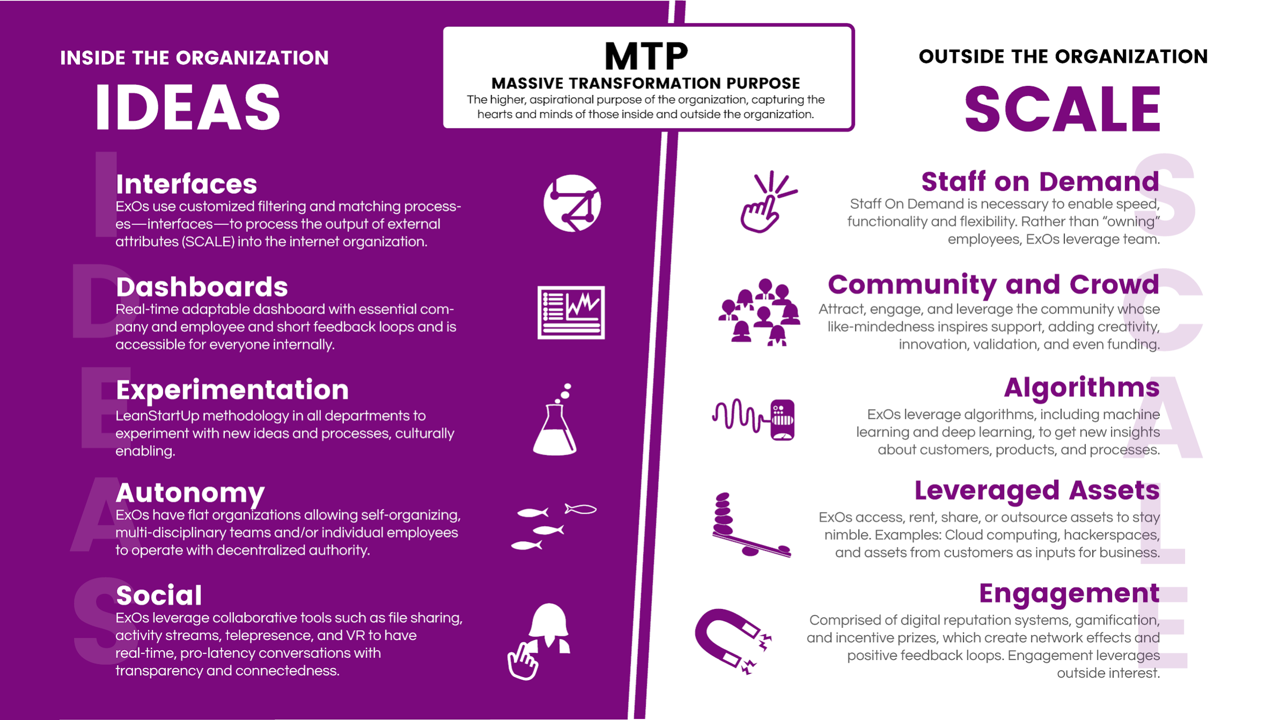How SMEs Can Thrive in the AI Era
Aug 27, 2024

In an era where artificial intelligence (AI) is reshaping industries, small and medium-sized enterprises (SMEs) find themselves at a crossroads. The promise of AI is vast—boosting efficiency, enhancing customer experiences, and unlocking new growth opportunities. Yet, for many SMEs, the question remains: How can they harness this power without being overwhelmed by the complexity and cost? This article explores how SMEs can thrive by focusing on their strengths and partnering with technology leaders to navigate the AI revolution.
The Current Landscape of Large Language Models (LLMs)
The development of large language models (LLMs) like OpenAI’s GPT-4 and Meta’s Llama 3.1 has generated significant buzz. These models are pushing the boundaries of what AI can achieve, but they also come with substantial challenges.
Strategic Data Center Locations
Data centers, the backbone of AI, are increasingly being built in rural areas. These locations offer cheaper land and electricity, critical for the resource-intensive process of training LLMs. For SMEs, understanding the strategic importance of these locations can influence decisions about where to base their operations or whom to partner with.
High Costs and Investments
Training LLMs is a costly endeavor, requiring billions in investments for GPUs, servers, cooling systems, and electricity. This high cost underscores the importance of efficient and cost-effective operations. SMEs must consider whether investing in AI infrastructure is feasible or if partnering with established providers is a more strategic move.
Competitive Landscape
The competition among major players like OpenAI, Meta, and xAI is intense, with each striving to develop the most efficient and powerful LLMs. For example, Meta’s Llama 3.1 offers performance on par with OpenAI’s GPT-4 but at nearly half the cost. Understanding these dynamics can help SMEs choose the right AI tools that balance cost with performance.
Emerging Trends
There is a growing focus on developing smaller, more efficient language models that balance performance with cost. These trends could democratize AI, making it more accessible and affordable for SMEs. By staying informed, SMEs can leverage these innovations to stay competitive without breaking the bank. Learn more about how AI is transforming industries in our recent blog posts on AI trends. For a deeper dive into LLM development, check out this article
Implications for SMEs: Strategic Decisions in the AI Era
The trends in LLM development have several implications for SMEs, especially in terms of cost, resource management, and strategic partnerships.
High Costs
Building data centers and training large language models requires significant investment. For most SMEs, the financial burden of setting up and maintaining AI infrastructure can be prohibitive. This challenge highlights the importance of strategic decision-making in AI adoption.
Strategic Partnerships
Instead of shouldering these costs alone, SMEs can benefit from partnering with established data centers and AI providers. This approach allows them to leverage existing infrastructure and expertise without the upfront costs.
Case Study:
A mid-sized B2B company partnered with an AI provider to optimize their outbound sales processes. By using AI-driven tools like BuiltWith and Clay for data enrichment and lead generation, the company was able to reduce its Customer Acquisition Cost (CAC) by 10x. This partnership not only saved costs but also enhanced operational efficiency, demonstrating the significant advantages of leveraging external expertise. For more examples and resources on how AI can be leveraged in various business functions, visit Escalate Group’s AI Studio.
Focus on Core Business
By partnering with tech providers, SMEs can focus on their core competencies and business goals rather than diverting resources to manage complex data center operations. This focus allows them to maintain agility and adapt quickly to market changes.
Scalability and Flexibility
Established partners often offer scalable solutions, allowing SMEs to grow and adapt their usage as needed without major investments. The ability to scale up or down based on demand is crucial for SMEs looking to expand their operations without overextending their resources.
Benefits of Focusing on Core Business and Leveraging Tech Partners
When SMEs concentrate on their core business and leverage the expertise of tech partners, they can unlock several key benefits.
1. Cost Efficiency
Resource Optimization: By partnering with established data centers, SMEs avoid the upfront costs of building and maintaining their own infrastructure. They can allocate resources more efficiently toward their core business activities.
Economies of Scale: Data center providers operate at scale, which translates to cost savings. SMEs benefit from shared infrastructure, reduced operational expenses, and predictable pricing models.
2. Risk Mitigation
Expertise: Data center partners specialize in managing infrastructure, security, and compliance. SMEs can rely on this knowledge without diverting attention from their core business.
Business Continuity: Established data centers offer robust disaster recovery and backup solutions, minimizing downtime risks.
3. Scalability and Flexibility
On-Demand Scaling: SMEs can scale their operations seamlessly by leveraging data centers. Whether they need more storage, processing power, or bandwidth, it’s readily available.
Agility: Tech partners allow SMEs to adapt quickly to changing market demands. They can experiment with new services, expand geographically, or pivot their business model without major infrastructure investments.
4. Security and Compliance
Robust Security Measures: Data centers invest heavily in security protocols, firewalls, and encryption. SMEs benefit from these safeguards without having to build them from scratch.
Compliance Standards: Data centers adhere to industry-specific compliance standards (e.g., GDPR, HIPAA). SMEs can leverage this compliance framework to protect customer data and maintain trust.
Defining and Implementing an AI Strategy
To thrive in the AI era, SMEs need a well-defined AI strategy that aligns with their business goals.
1. Assess Business Goals
Understanding Objectives: Identify specific business objectives that AI can address, such as improving customer service, optimizing supply chains, or automating processes. Ensure that these objectives align with the overall business strategy.
2. Data Strategy
Data Collection: Identify relevant data sources within the organization, such as customer interactions, sales, and inventory data.
Quality and Cleanliness: Ensure data quality, consistency, and accuracy. Clean, reliable data is the foundation of any successful AI initiative.
External Data: Consider external data sources, like market trends and competitor insights, to gain a holistic view.
3. AI Use Cases
Prioritize Use Cases: Focus on AI use cases that offer the highest impact and are feasible to implement. Examples include predictive analytics, recommendation engines, and process automation.
Practical Example: A company integrated OpenAI’s GPT-4 and Anthropic’s Claude into their customer service and document analysis processes. This allowed them to automate responses to common customer inquiries and efficiently analyze large volumes of documents. The result was improved customer satisfaction and more efficient use of human resources.
4. Tech Stack and Partnerships
Evaluate Partners: Choose tech partners based on reliability, security, and scalability. These partners should align with your business needs and long-term goals.
Cloud Services: Leverage cloud platforms for flexibility and accessibility, enabling your business to scale AI solutions as needed.
APIs and Interfaces: Explore APIs for integrating AI capabilities into existing interfaces, such as websites and apps, ensuring seamless functionality.
5. Pilot Projects
Start Small: Begin with small-scale pilot projects to validate AI use cases. This approach allows you to test the waters without committing significant resources upfront.
Measure Success: Track key metrics like ROI, efficiency gains, and customer satisfaction to assess the impact of AI initiatives.
6. Change Management and Training
Employee Preparation: Prepare your team for AI adoption by providing training and addressing concerns. A well-prepared workforce is key to successful AI implementation.
Foster a Culture of Learning: Encourage a culture of continuous learning and adaptation, which is essential for staying competitive in the fast-evolving AI landscape.
Conclusion: Focus on Strengths, Partner for Success
As AI continues to evolve, the opportunities for SMEs are vast. By focusing on core competencies and partnering with technology leaders, SMEs can not only survive but thrive in this new era. AI provides the tools to optimize operations, reduce costs, and scale businesses effectively. Ready to explore how AI can transform your business? Contact us today to discuss your AI strategy and discover the right partners for your journey.

